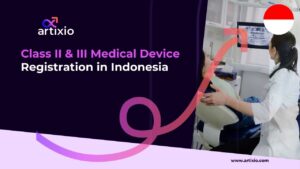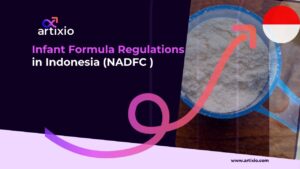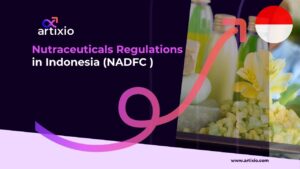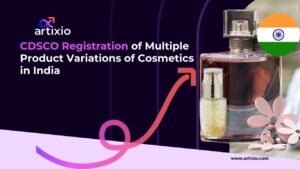Contamination of toxins in cosmetics is a significant public health concern. Harmful substances can inadvertently or deliberately enter cosmetics during manufacturing, packaging, or storage, potentially causing adverse health effects. Regulatory authorities in Indonesia have taken significant step in defining the contamination limits in the cosmetics. This blog provides an understanding on the recent regulation passed on the contamination limits allowed in the cosmetics.
The Indonesian Food and Drug Authority, BPOM, regulates the safety and quality of cosmetics, including setting limits for contaminants to ensure that products are safe for human use.
Types of Contaminants identified by BPOM (NADFC)
According to the NADFC BPOM regulation number 16/2024, the types of contaminants are classified into 3, they are microbial, heavy metal and chemical contaminants.
- Microbial contaminants: They are the contaminants that are found in cosmetics which originate from microbes that can be the cause of harm to human health.
- Heavy metal contaminants: These are cosmetic contaminants which are in the form of metallic chemical elements and metalloids. They have high atomic weight and density. Apart from this they are also toxic and have the potential to harm the health.
- Chemical contaminants: These contaminants in cosmetics originate from chemical elements or compounds that can harm human health.
It is not that the cosmetic products must be completely devoid of these substances but there are certain limits (range) to which it can be present in the cosmetic products.
BPOM (NADFC) Regulation on Contamination Limits in Cosmetics
Cosmetic contaminants are a serious matter. It is the responsibility of Indonesian health authority to make sure that the cosmetics released into the Indonesian market must be under control for contaminants. So to stay ahead in terms of the safety of the population, NADFC BPOM has revoked its BPOM Regulation Number 12/2019 and has replaced it with BPOM Regulation Number 16/2024. This new regulation passed on September 3rd, 2024 has set clear limits that are allowed for each contaminant to be seen in the cosmetic products released into the Indonesian territory.
Who Must Follow This?
Where Should This Be Conducted?
The safety testing of cosmetics for contaminants must be done in any of the following testing facilities that are:
- Accredited laboratories or
- Internal laboratories of cosmetic industries that either have a GMP certificate for cosmetics or a certificate of compliance in the aspects for cosmetic GMP.
One thing to be noted is that the testing that is being conducted must be with verified or validated analytical methods.
Highlights of BPOM (NADFC) Regulation on Contamination Limits in Cosmetics
Here are the general categories of contaminants and their typical limits according to BPOM:
Heavy Metals : BPOM has set maximum permissible limits for heavy metals to avoid toxicity from cosmetics:
- Lead (Pb): ≤ 20 ppm
- Mercury (Hg): ≤ 1 ppm (for products without intentional mercury use, as mercury is banned in cosmetics except for certain traditional medicinal uses)
- Arsenic (As): ≤ 5 ppm
- Cadmium (Cd): ≤ 5 ppm
These limits apply to trace amounts of metals that could enter cosmetics during production, often from impurities in raw materials.
Microbial Contaminants: BPOM sets specific guidelines to control microbial contamination, particularly for products prone to contamination (e.g., eye makeup, creams):
| Testing limits | Cosmetics for A | Cosmetics other than for A |
| Total Plate Count | Not more than 500 CFU/g or CFU/ml | Not more than 1,000 CFU/g or CFU/ml |
| Yeast & Mold count | Not more than 500 CFU/g or CFU/ml | Not more than 1,000 CFU/g or CFU/ml |
| Pathogenic bacteria like the Pseudomonas aeruginosa, Candida Albicans, Staphylococcus aureus | Should be negative per 0.1g or 0.1ml of the test specimen |
Should be negative per 0.1g or 0.1ml of the test specimen
|
A – cosmetic products for: i) children under the age of 3, ii) Area around the eyes, iii) mucus membranes
Preservatives and Chemical Contaminants: BPOM requires that cosmetics do not contain harmful chemicals beyond regulated limits, including:
- 1,4 Dioxane: should not exceed 10mg/kg or 10mg/l.
- Acrylamide: should not exceed 0.1 mg/kg for non-rinse body care preparations and 0.5 mg/kg for other preparations.
- Diethylene glycol: should not exceed 0.1%.
Transition Timelines for BPOM Regulation No. 16 of 2024
Article 9 and Article 10 of the Chapter IV of the agency regulations states,
- BPOM Regulation Number 12 of 2019 concerning Contamination in Cosmetics (State Gazette of the Republic of Indonesia 2019 Number 738) is withdrawn and declared null and void.
- The BPOM Regulation No. 16 of 2024 shall come into force after 12 months from the date of promulgation i.e., 3rd Sept 2024.
Regulation Violation & Administrative Sanctions as per BPOM
When the provision of Article 2 (1) and Article 6 (1) of the BPOM regulation 16/2024 is violated by the business operators, the administrative actions can be
- Written warning
- Temporary prohibition of cosmetic distribution for a period of 1 year max.
- Withdrawal
- Destruction of the cosmetics
- Suspending temporarily the cosmetic production/import activities for a max. period of 1 year.
- Notification number revocation
- For a maximum period of 1 year, temporarily closing the online access to notification submission.
Ensure Compliance, Accelerate Success with Artixio
Artixio, the leading global company with 20+ years of experience, is here to help you. Our regional experts are always keen in providing product specific strategized solutions that allow for a faster market entry. Contact Artixio today at info@artixio.com.
FAQs
Q. What is the current BPOM regulation that is to be followed regarding the cosmetics contamination?
A. The NADFC BPOM regulation that is currently valid regarding the matter of cosmetic contamination is the Regulation number 16/2024 of the Food and Drug Supervisory Agency. This was the replacement of Regulation number 12/2019 of the Food and Drug Supervisory Agency.
Q. What are the different types of contaminants that can be found in cosmetics?
A. The different types of contaminants that can be found in cosmetics are microbial contaminants, chemical contaminants and heavy metal contaminants.
Q. What is the maximum level for heavy metal contamination in cosmetics?
A. The maximum level for heavy metal contamination for Mercury is < 1 mg/kg, Lead – 20 mg/kg, Arsenic and Cadmium – 5 mg/kg as per the BPOM regulation.
Q. What are thematic cosmetics?
A. Unlike modern cosmetics, thematic cosmetics are a type of cosmetics that are made from natural ingredients produced directly from dried or fresh ingredients available, like the plants and fruits. They are traditional cosmetics and are identical to the region.





